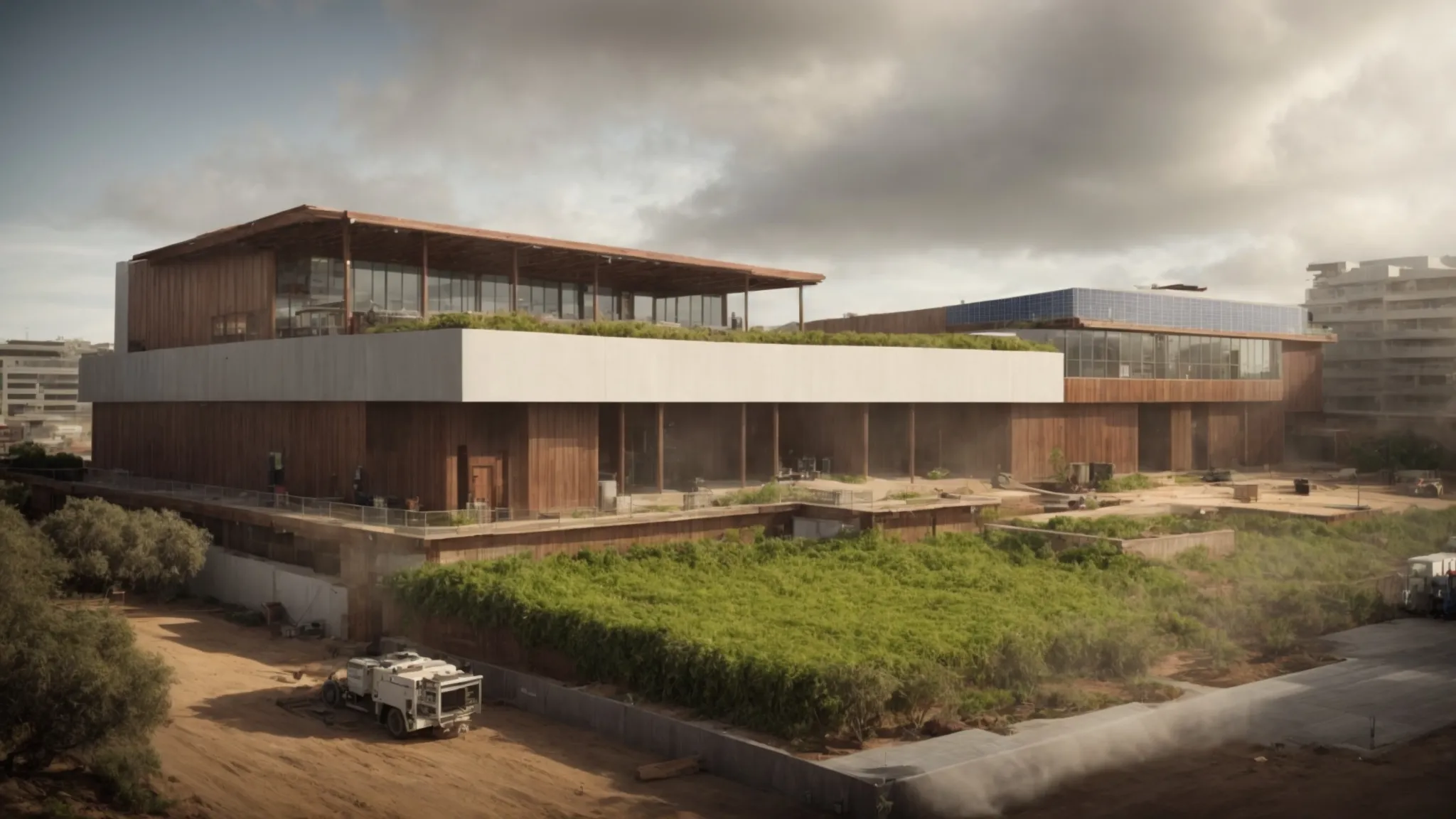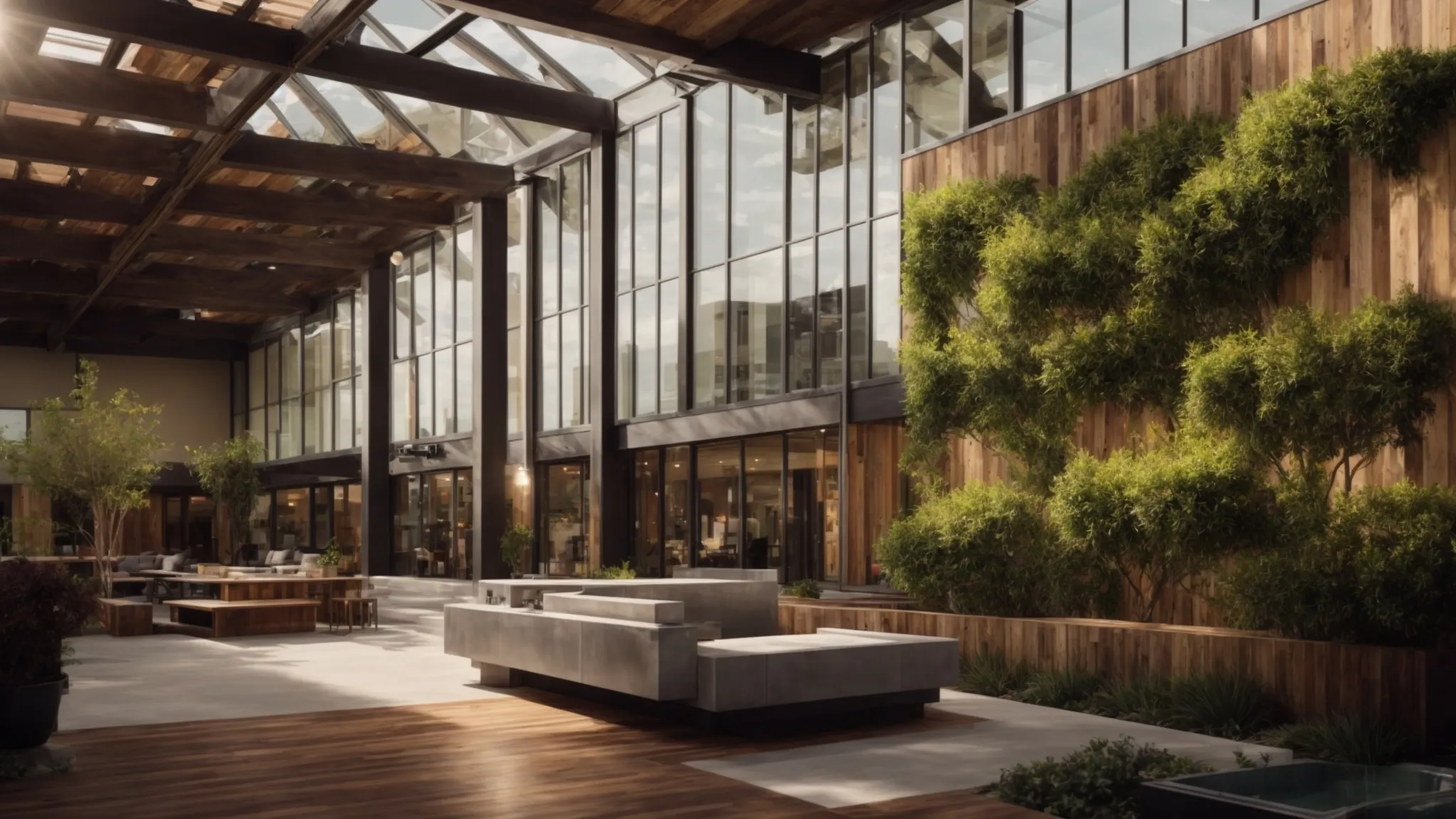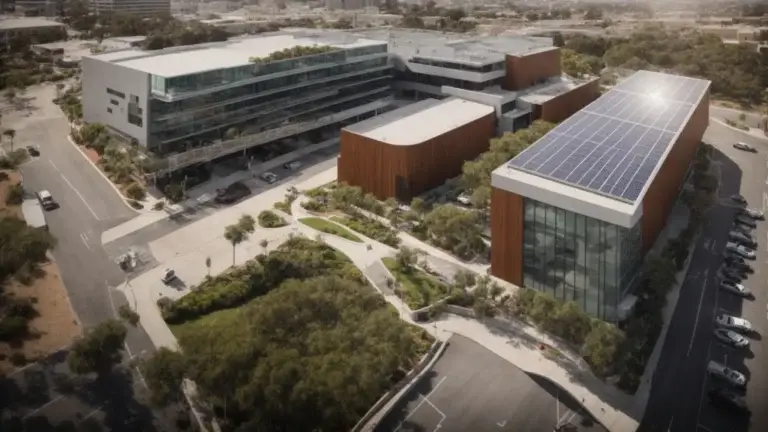You may not know that San Diego’s commercial construction sector has been at the forefront of eco-friendly innovation for years. From the early adoption of green practices to the integration of sustainable materials and cutting-edge technologies, the evolution of eco-friendly initiatives has reshaped the landscape of commercial buildings in the city.
However, what truly sets San Diego apart is its continuous drive toward implementing energy-efficient designs and achieving green certifications. But what lies ahead for this dynamic industry, and how will future trends in eco-friendly construction shape the city’s skyline?
Key Takeaways
-
Incorporating sustainable materials and energy-efficient designs to promote green practices.
-
Utilizing renewable energy sources and efficient waste reduction strategies for sustainability.
-
Implementing energy-efficient building designs to lower carbon footprints and save costs.
-
Adhering to green certifications and standards for environmental impact reduction and market competitiveness.
Early Adoption of Green Practices

By incorporating sustainable materials and energy-efficient design elements, you can spearhead the early adoption of green practices in commercial construction projects in San Diego.
Embracing green building codes and conducting thorough environmental impact assessments are vital to creating environmentally responsible structures. Adhering to these codes guarantees that your construction projects minimize negative environmental impacts and promote sustainability.
Implementing energy-efficient design elements such as solar panels, natural lighting, and efficient insulation reduces the overall environmental footprint and leads to long-term cost savings.
Sustainable Materials and Technologies

To further enhance your eco-friendly innovation in San Diego’s commercial construction, exploring sustainable materials and technologies becomes imperative for reducing environmental impact and advancing green practices.
Incorporating recycled materials into construction projects helps minimize the use of new resources and decreases waste generation.
Embracing renewable energy sources like solar panels or wind turbines can greatly reduce buildings‘ carbon footprint, making them more environmentally friendly.
Implementing efficient waste reduction strategies, such as proper recycling programs and construction waste management plans, can further contribute to sustainable practices in commercial construction.
Energy-Efficient Building Designs

Exploring innovative energy-efficient building designs is essential for maximizing sustainability and minimizing environmental impact in San Diego’s commercial construction sector. Incorporating passive solar techniques can greatly reduce energy consumption by harnessing the sun’s heat and light to maintain comfortable indoor temperatures.
Energy modeling plays an important role in predicting a building’s energy usage, allowing for the optimization of design elements to enhance efficiency. Buildings can operate more sustainably by strategically placing windows for natural light, using thermal mass to store heat, and ensuring proper insulation.
Embracing energy-efficient designs lowers carbon footprints and leads to long-term business cost savings. Implementing these strategies today sets the foundation for a greener, more eco-conscious future in commercial construction.
Green Certifications and Standards

As the focus shifts to ‘Green Certifications and Standards’ in San Diego’s commercial construction industry, guaranteeing compliance with established eco-friendly guidelines becomes a top priority for sustainable development. To navigate this landscape effectively, consider the following key points:
-
Environmental impact: Green certifications emphasize reducing the environmental footprint of buildings through efficient resource usage and waste management.
-
Industry regulations: Adhering to green standards guarantees alignment with local and national regulations, fostering a culture of sustainability within the construction sector.
-
Cost implications: While initial costs may be higher for green-certified projects, long-term savings on energy and maintenance often outweigh the upfront investment.
-
Market competitiveness: Green certifications can enhance a building’s market value by attracting environmentally conscious tenants and investors, positioning it as a sustainable choice in the market.
Future Trends in Eco-Friendly Construction

Future eco-friendly construction trends shape the industry towards more sustainable and innovative building practices. Smart infrastructure is becoming increasingly prevalent, integrating technology to optimize energy usage, water conservation, and overall efficiency in commercial construction projects.
Buildings are designed with advanced systems that can adapt to environmental changes, significantly reducing their carbon footprint. Carbon neutrality initiatives are gaining momentum, with many construction companies committing to achieving net-zero carbon emissions by implementing renewable energy sources and sustainable materials.
The focus is on creating structures that meet current environmental standards and anticipate future regulations, ensuring long-term sustainability. By embracing these future trends, the commercial construction industry in San Diego is moving towards a greener and more environmentally conscious future.
Frequently Asked Questions
What Are the Main Challenges Faced by Commercial Construction Companies in San Diego When Implementing Eco-Friendly Practices?
Implementing eco-friendly practices in San Diego’s commercial construction may raise challenges, such as high initial costs, limited availability of green technology, and the need for specialized knowledge. Solutions include strategic partnerships and innovative implementation strategies.
How Do Sustainable Materials and Technologies Impact the Overall Cost of a Commercial Construction Project in San Diego?
Choosing sustainable materials and technologies can initially raise costs, but long-term benefits like energy savings and regulatory incentives offset this. Material selection is key to balancing upfront expenses with ongoing savings in your commercial construction project.
Are Any Specific Energy-Efficient Building Designs That Have Become Particularly Popular Among Commercial Construction Companies in San Diego?
Regarding energy-efficient building designs in San Diego, innovative technologies like solar panels, green roofs, and smart HVAC systems are gaining traction. These features not only reduce energy costs but also promote sustainability.
What Are Some Lesser-Known Green Certifications and Standards That Commercial Construction Projects in San Diego Can Strive to Achieve?
Explore lesser-known green building certifications like Green Globes and Living Building Challenge. Incorporate innovative materials into your projects to meet these standards. Stay ahead of sustainable construction trends to reduce environmental impact and promote eco-friendly practices.
How Do Local Regulations and Policies in San Diego Influence the Adoption of Eco-Friendly Practices in Commercial Construction Projects?
In San Diego, local regulations and policies powerfully influence eco-friendly practices in commercial construction projects. Government incentives drive change, while industry collaboration fosters innovative solutions, shaping a sustainable future for the construction landscape.




